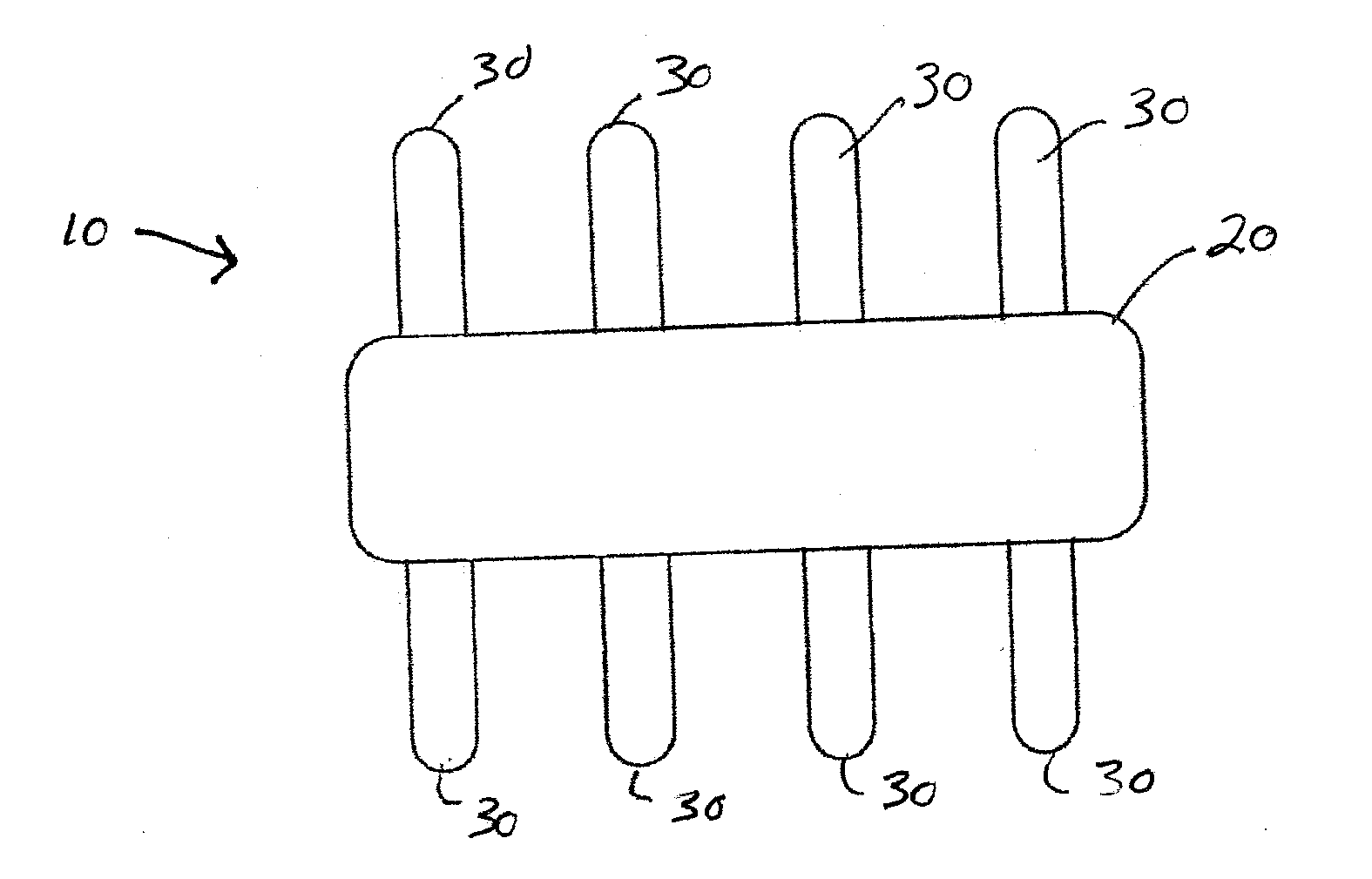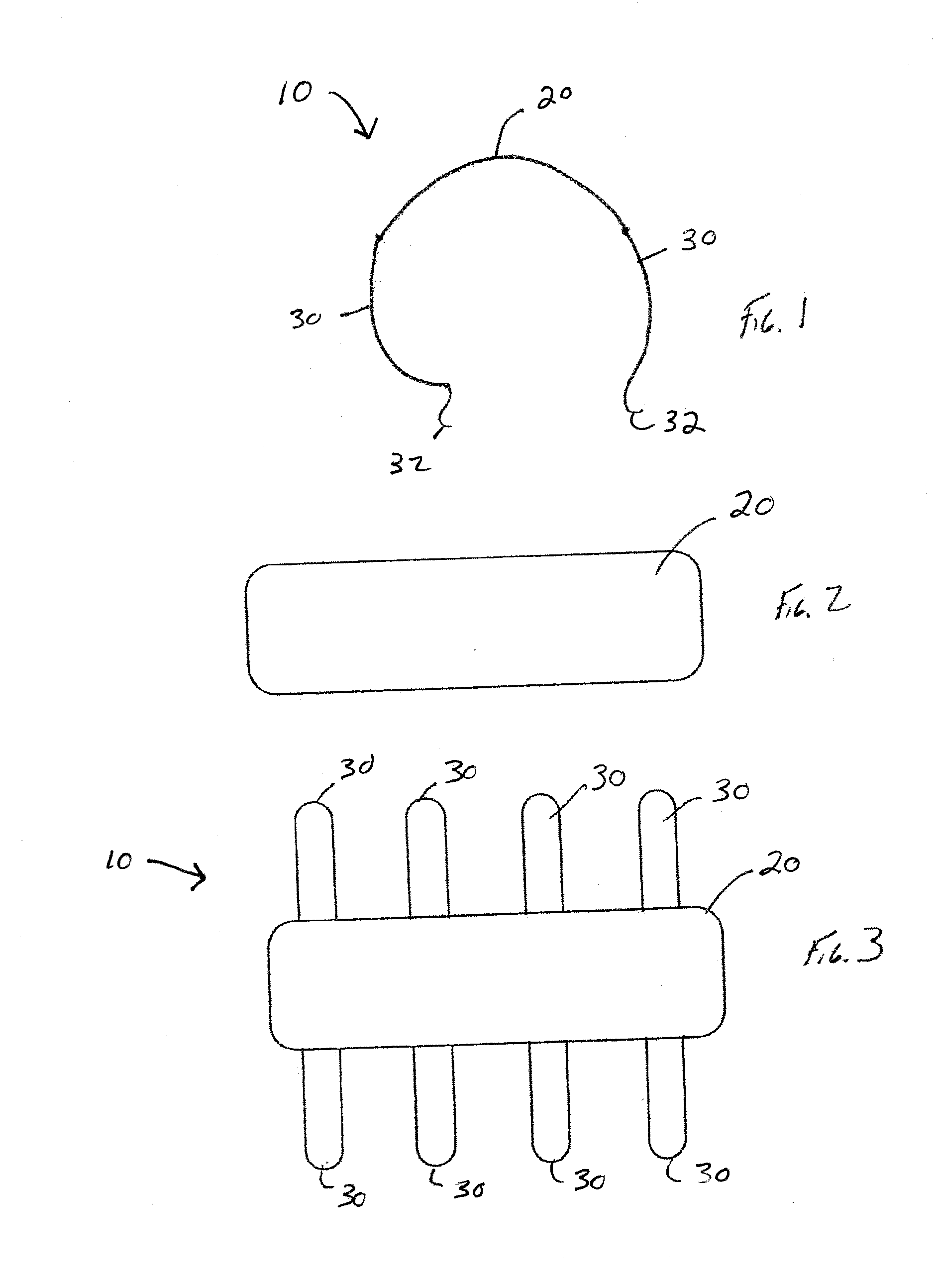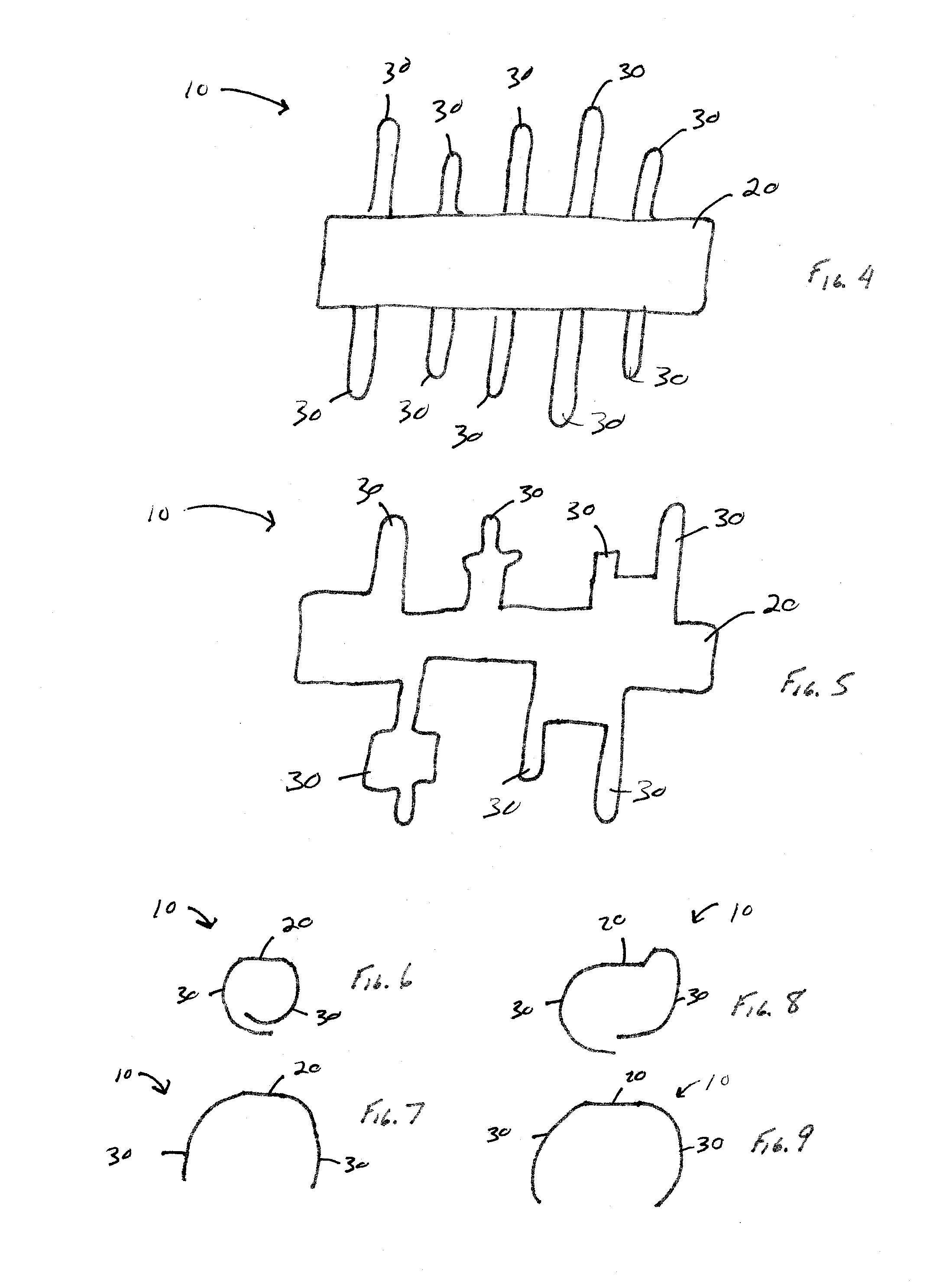Expandable Device
a technology of expanding devices and tracheas, which is applied in the field of expanding devices, can solve the problems of pre-existing obstructions in the passageway of the body, floppy trachea that collapses during respiration, and decreases blood flow, so as to facilitate the operation, function and/or success of the medical device, and facilitate the delivery of biological agents.
- Summary
- Abstract
- Description
- Claims
- Application Information
AI Technical Summary
Benefits of technology
Problems solved by technology
Method used
Image
Examples
Embodiment Construction
[0049]Referring now to the drawings wherein the showings are for the purpose of illustrating embodiments of the invention only and not for the purpose of limiting the same, FIGS. 1-9 illustrate non-limiting embodiments of the medical device 10 in accordance with the present invention.
[0050]Referring now to FIG. 3, there is illustrated one non-limiting configuration of the medical device 10 in accordance with the present invention. The medical device 10 includes a backbone portion 20 and a plurality of ribs 30 that are connected to the backbone portion. The backbone portion and ribs can be formed from a single piece of material such that the ribs are integrally formed with the backbone portion; however, this is not required. One or more ribs can be connected to the backbone portions by one or more means (e.g., adhesive, solder, weld bead, mechanical connection, melted connected, compression connection, etc.). The backbone portion is illustrated in FIGS. 2 and 3 as having a generally ...
PUM
| Property | Measurement | Unit |
|---|---|---|
| length | aaaaa | aaaaa |
| length | aaaaa | aaaaa |
| thickness | aaaaa | aaaaa |
Abstract
Description
Claims
Application Information
 Login to View More
Login to View More - R&D
- Intellectual Property
- Life Sciences
- Materials
- Tech Scout
- Unparalleled Data Quality
- Higher Quality Content
- 60% Fewer Hallucinations
Browse by: Latest US Patents, China's latest patents, Technical Efficacy Thesaurus, Application Domain, Technology Topic, Popular Technical Reports.
© 2025 PatSnap. All rights reserved.Legal|Privacy policy|Modern Slavery Act Transparency Statement|Sitemap|About US| Contact US: help@patsnap.com



